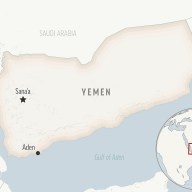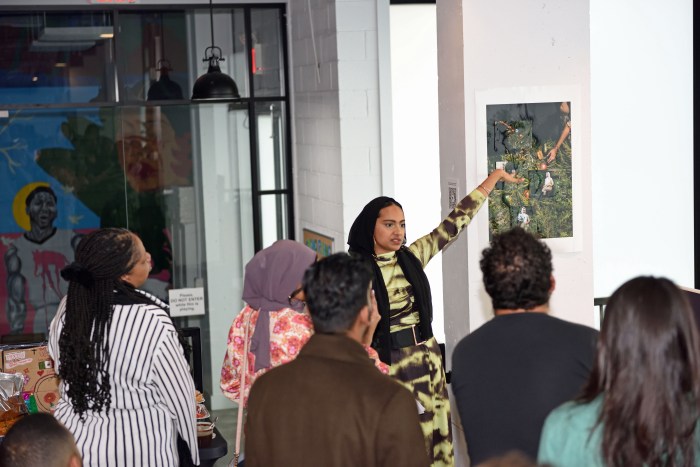TORONTO – Health-care workers around the world should have priority access to swine flu vaccine when it becomes available, the World Health Organization said Monday.
The agency’s vaccine chief skated around the dilemma of how that goal can be filled, given that most countries will have little or no access for the foreseeable future to pandemic vaccine, the bulk of which has already been purchased by a short list of affluent nations.
Dr. Marie-Paule Kieny said the WHO is working at the highest levels internationally to urge those countries to share, either by donating a portion of their vaccine or providing funds for the purchase of pandemic vaccine for countries which currently are not in the queue.
Kieny revealed that an expert advisory panel made the recommendation – its only recommendation on who should get priority access to pandemic vaccine – when it met in a special session last week. The idea, Kieny said, is both to protect health-care workers and ensure health-care systems have enough healthy staff to function during a time of increased demand.
The Strategic Advisory Group of Experts on Immunization, or the SAGE, as it is known, said countries should draw up their own priority groupings for pandemic vaccine, depending on their individual situations. It suggested they might want to consider vaccinating pregnant women, people with chronic health conditions, young children and healthy adults, all of whom have been hard hit by the pandemic virus.
“There is identification of various options but no ranking and no priority given to these options,” Kieny, who is head of the WHO’s initiative for vaccine research, said, reiterating that countries will need to make these choices themselves.
Just how quickly countries will be able to work through their priority lists depends on the speed at which vaccine becomes available and in what amount. Those questions are still up in the air, she acknowledged in a news conference.
That’s because vaccine manufacturers are reporting that they are getting a disappointingly low yield of vaccine viruses from the existing seed strains.
Vaccine makers are getting between 25 and 50 per cent as much virus as they get when they make seasonal H1N1 vaccine, Kieny said, adding that new seed strains are being made in an effort to improve the yield.
“We hope at least one of them or more than that … will be giving higher yields that will be comparable to the ones obtained with seasonal vaccine,” she said.
The New York Medical College laboratory, which has been making vaccine viruses for decades, said it is in the process of generating a new seed strain, using a new target virus. Its first swine flu seed strain produced the highest yield in the hands of manufacturers, about 50 per cent of what is seen with seasonal flu vaccine production.
And the U.S. Centers for Disease Control confirmed it has made three new seed strains and will begin shipping them to manufacturers next week.
“We do not know whether they will be superior to the previous ones, but the manufacturers will determine this by testing them in their processes,” Dr. Ruben Donis, chief of the molecular genetics branch of the CDC’s influenza division, said via email.
If the yield cannot be increased, it will slow the rate at which pandemic vaccine comes out of the production pipeline, adding to the time it takes to protect populations in countries like Canada that have purchased vaccine. And countries that haven’t pre-ordered pandemic vaccine would face substantial delays before manufacturers have product to sell to them.
Canada’s pandemic contract is held by GlaxoSmithKline, which will make the vaccine at its facility in Ste-Foy, Que.
GSK declined to reveal what kind of yield it is seeing in its early work with the new virus. An emailed statement only said that the work is ongoing and the company “expects to deliver the first vaccine supply … in three or four months time depending on availability of standards from health authorities.”
Canada’s contract ensures the country enough vaccine for all Canadians who want to be immunized. Dr. David Butler-Jones, Canada’s chief public health officer, has said he expects GSK to start providing batches of vaccine in late October. He has said it’s hoped all Canadians who want vaccine will be able to get the expected two doses by the end of December.
A similar problem occurred in 2006 when manufacturers began working on experimental vaccines to protect against H5N1 avian influenza. Most reported getting only between one-quarter to one-third of the regular yield; new seed strains produced better output levels.
“I think that’s a technical problem that will be solved,” said influenza expert Albert Osterhaus, head of the institute of virology at Erasmus Medical Center in Rotterdam, the Netherlands.
“Basically I think production will be pumped up. Of course I’d rather see production strains that produce much better. But you get mixed messages at the moment…. Some of the pharmaceutical companies say it’s a real problem, others say well, it’s not that dramatic.”
Kieny also noted that given the time it will take to do clinical trials needed for licensure of the pandemic vaccines, fully licensed products may not be available until the end of the year. But she said many countries have emergency use provisions that would allow them to begin vaccinating before the licensing process is complete.
–
Follow Canadian Press Medical Writer Helen Branswell’s flu updates on Twitter at CP-Branswell
















